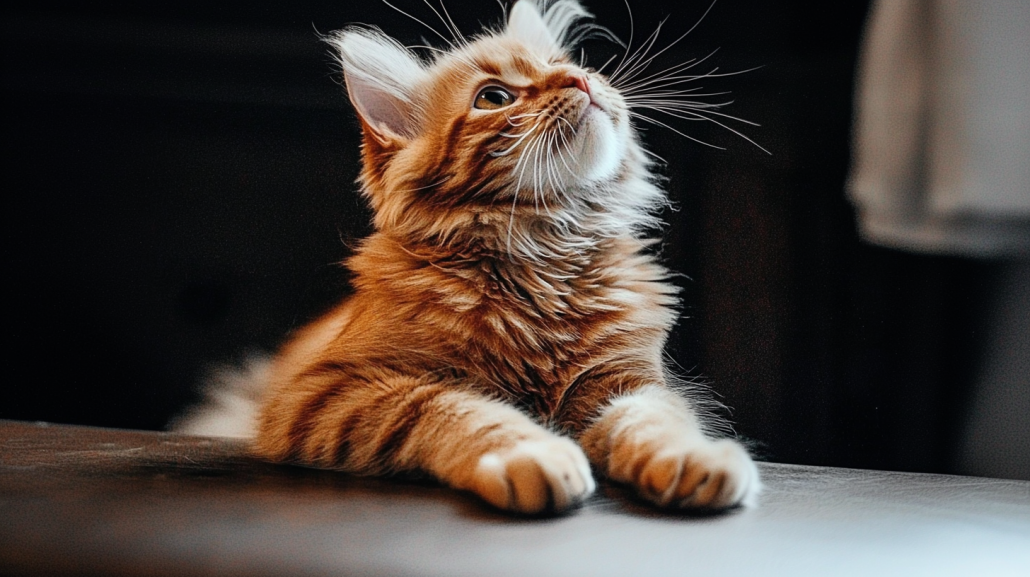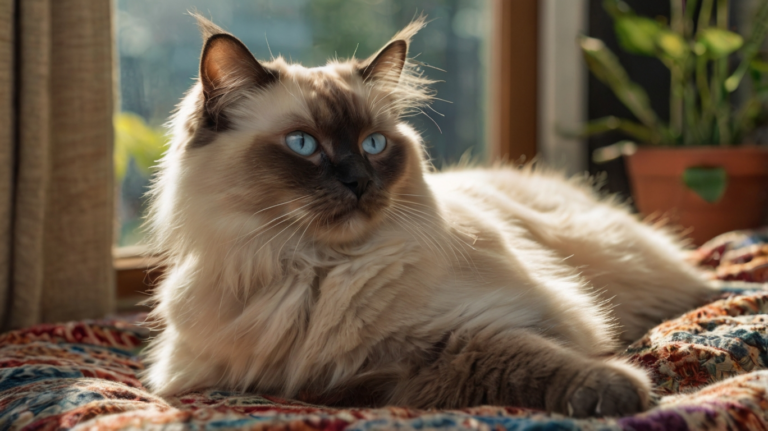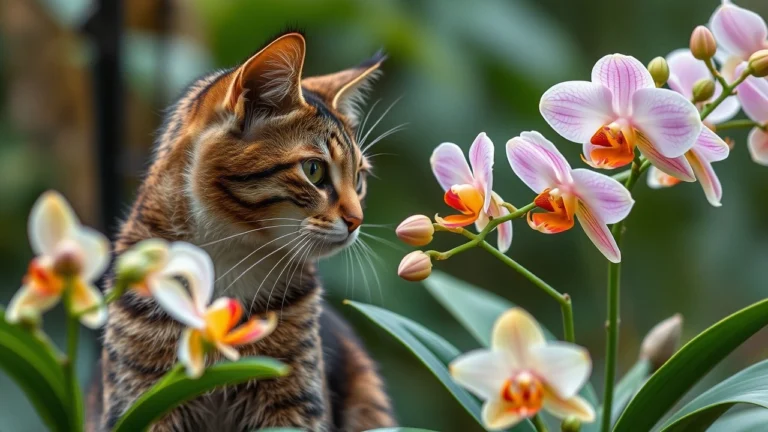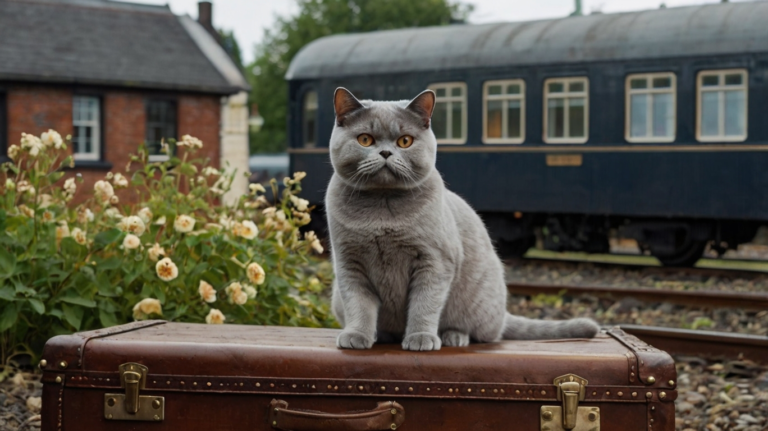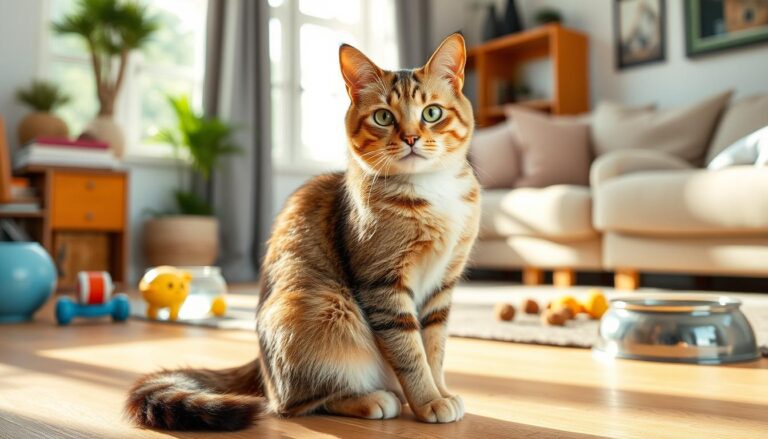Maine Coon Cat Colors: 7 Heartwarming & Magical Facts
Introduction
Picture a regal, fluffy cat adorned with tufted ears, a majestic tail, and a coat so striking it appears painted by nature’s finest brush. You’re likely envisioning a Maine Coon—one of the largest and most beloved domestic cat breeds in the world. Among their many endearing traits, Maine Coon Cat Colors are a highlight, offering an almost endless array of gorgeous shades and patterns. Whether you’re drawn to the bold contrast of a black smoke or the subtle elegance of a silvery tabby, these cats have a coat for virtually every taste.
Yet there’s more to Maine Coon Cat Colors than meets the eye. From unique genetic factors to questions of breed standards, the color spectrum in Maine Coons is woven with fascinating details. In this article, you’ll learn how these gorgeous cats got their famed diversity, discover the nuances of each color group, and gather practical tips for caring for your Maine Coon’s luxurious coat. Disclaimer: Always consult a qualified veterinarian for specific health or grooming advice. This article serves as general information and is not meant to replace professional veterinary guidance.
A Brief History of Maine Coon Cats
Before we plunge into Maine Coon Cat Colors, let’s take a quick look at the breed’s origins. Often referred to as the “gentle giants” of the cat world, Maine Coons are believed to have emerged naturally in the state of Maine, where they developed thick, water-repellent coats to withstand harsh winters. Legends abound regarding their ancestry—one tale suggests Marie Antoinette’s beloved long-haired cats traveled to North America, while another credits them as descendants of Norwegian Forest Cats that accompanied Vikings. Although these stories add flavor, genetic tests have shown that Maine Coons are simply a natural breed that evolved in New England, later refined by breeders.
According to the Cat Fanciers’ Association (CFA), Maine Coons are one of the oldest American cat breeds recognized by the cat fancy. Their rugged, semi-long fur, large stature, and tufted ears all help them survive colder climates, while their social, laid-back demeanor has won them a reputation as family-friendly companions. Now recognized worldwide, Maine Coons continue to gain fans, in part due to their striking appearance—of which color plays a huge role.
The Science Behind Maine Coon Cat Colors
Genetic Influences
The coat of a Maine Coon is shaped by several genes responsible for color, pattern, and distribution of pigmentation. Some genes code for black, while others dilute that pigment into blue or gray. Additional genes determine whether the cat will have tabby stripes, patches of color (as in calicos and torties), or remain a solid shade. Maine Coon Cat Colors can thus vary in ways that even the most experienced breeders sometimes find surprising.
Color vs. Pattern
“Maine Coon Cat Colors” doesn’t just refer to the underlying pigment—pattern is a crucial part of any cat’s appearance. You might have a black smoke Maine Coon (a solid black fur with lighter undercoat) or a black tabby (a pattern of stripes or swirls on a black base). Therefore, color is often described alongside pattern, such as “silver tabby” or “blue tortie.” Recognizing this distinction makes exploring Maine Coon Cat Colors both fun and more precise.
Influence of Breed Standards
Different cat registries may have slightly different naming conventions or standards for Maine Coon Cat Colors. However, most organizations broadly recognize the same core groupings—solid, tabby, smoke, shaded, bi-color, calico, and tortoiseshell variations. Some colors, like chocolate or lilac, are often disqualified in official breed standards, meaning those hues are very unlikely to be seen in a purebred Maine Coon.
The Core Maine Coon Color Families
Below is an at-a-glance chart of key Maine Coon Cat Colors you might encounter. Note that each color can appear in multiple patterns (tabby, solid, etc.) and shading types.
| Color Family | Examples / Variations | Notes |
|---|---|---|
| Solid | Black, White, Blue (Gray), Red, Cream | Solid colors have no tabby striping or multi-tonal shading. |
| Tabby | Brown Tabby, Silver Tabby, Red Tabby, Blue Tabby | The tabby pattern can be classic (swirled), mackerel (striped), or ticked. |
| Tortoiseshell | Black + Red (Tortie), Blue + Cream (Blue Cream Tortie) | Torties mix two colors in a mottled pattern, often with some tabby markings. |
| Calico / Bi-Color | Black + White, Red + White, Blue + White, Tortie + White (Calico) | Calico specifically features white + two other distinct colors, usually black/red. |
| Smoke / Shaded | Black Smoke, Blue Smoke, Shaded Silver, Chinchilla Silver | These cats have light undercoats with darker tips, creating a “smoke” effect. |
| Red Series | Red (sometimes called “ginger”), Cream | Often paired with tabby patterns; “red” is a dominant color gene in cats. |
Exploring Popular Maine Coon Cat Colors
1. Brown Tabby
When many people picture a Maine Coon, the brown tabby color pops into mind. This iconic look showcases bold stripes or swirls, typically with a warm, brownish base. Types include classic tabby, mackerel tabby, and ticked tabby. Brown tabbies exemplify the rugged, forest-cat charm often associated with Maine Coons, and they remain a top favorite among enthusiasts.
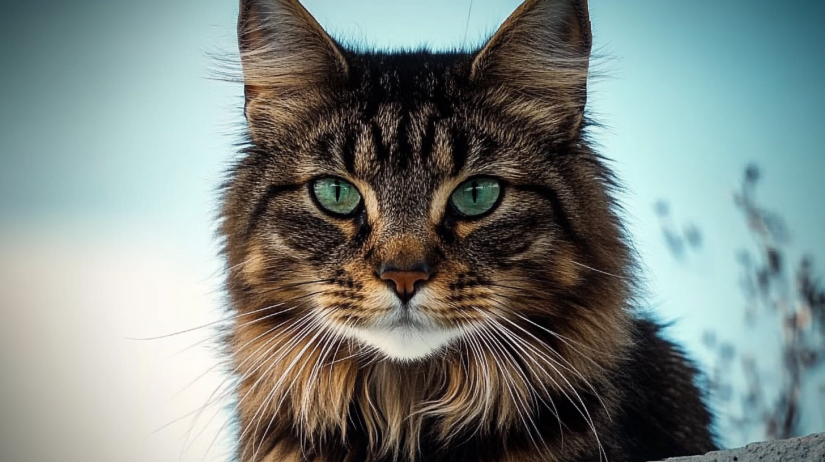
2. Black Smoke
For drama and flair, it’s hard to beat a black smoke coat. Here, the cat’s fur appears mostly black but reveals a silvery-white undercoat whenever the hair is parted or the cat moves. This contrast gives the cat a smoky aura, lending an elegant, almost mysterious vibe.

3. Blue (Gray)
Among Maine Coon Cat Colors, blue stands out for its understated sophistication. Blue Maine Coons have a grayish coat that can range from pale silver to a deeper slate tone. This color can appear in both solids and tabby variations, offering many potential combinations.
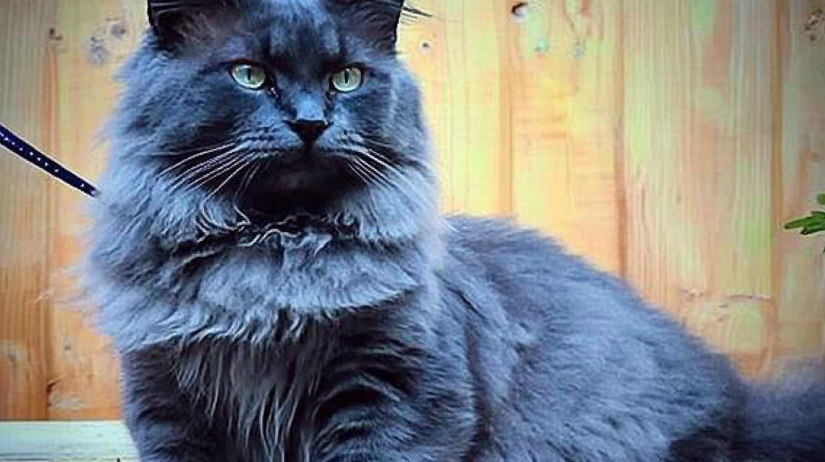
4. Silver Tabby
Silver tabbies feature a crisp white undercoat with black or dark gray markings, creating a striking contrast. This color pattern can often be seen in the “classic” tabby swirl, but you’ll also find silver mackerel or silver ticked tabbies. Many owners adore silver tabbies for their sleek, icy appearance that accentuates the Maine Coon’s majestic features.
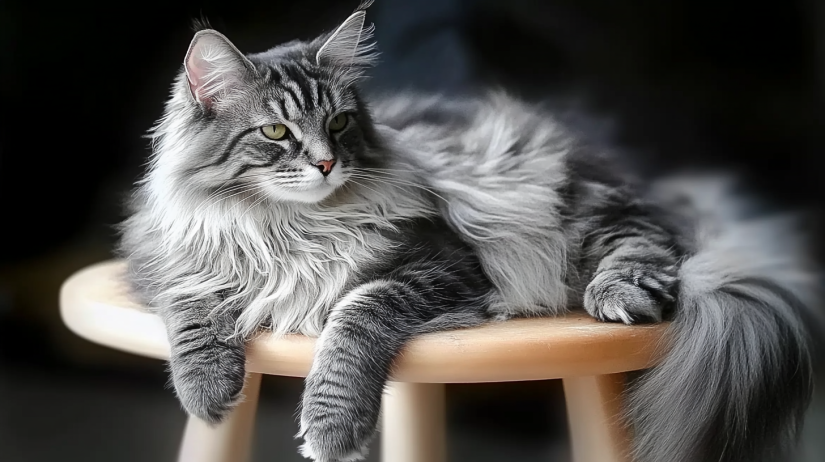
5. Tortoiseshell (Tortie) and Blue Cream Tortie
Tortoiseshell Maine Coons are a beautiful blend of black and red patches that can appear almost mosaic. When black becomes blue and red becomes cream, the result is a blue cream tortie. These coats offer a subtle yet intriguing tapestry of color that can shift with seasonal coat changes.
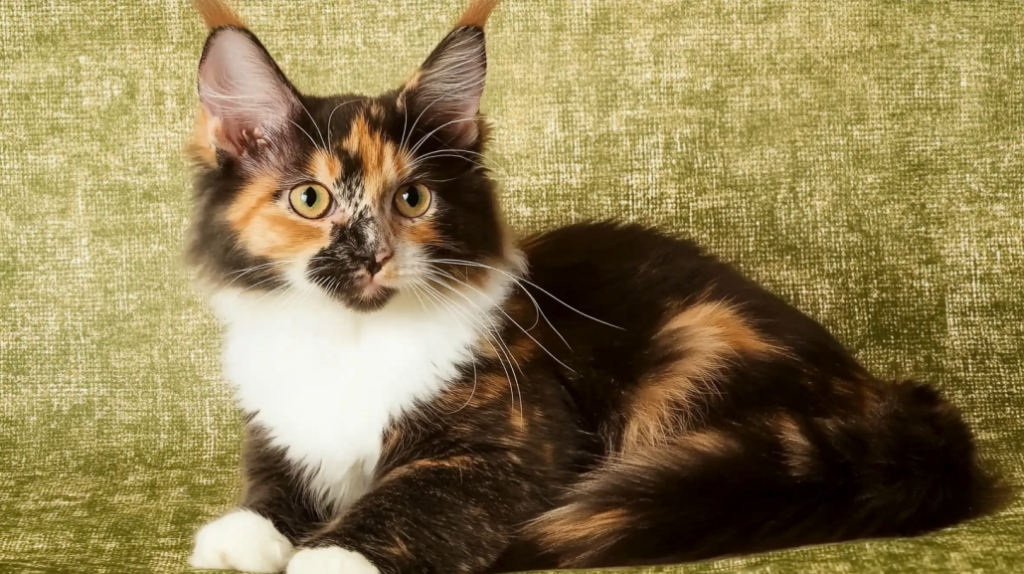
6. Calico and Bi-Color
If you love bold patterns, the calico or bi-color Maine Coon might be your dream cat. Calico coats typically include white plus patches of black and red (or blue and cream), while simpler bi-colors may pair white with just one other color. These distinct patches can be large or small and often include a colored tail and cap with white legs.
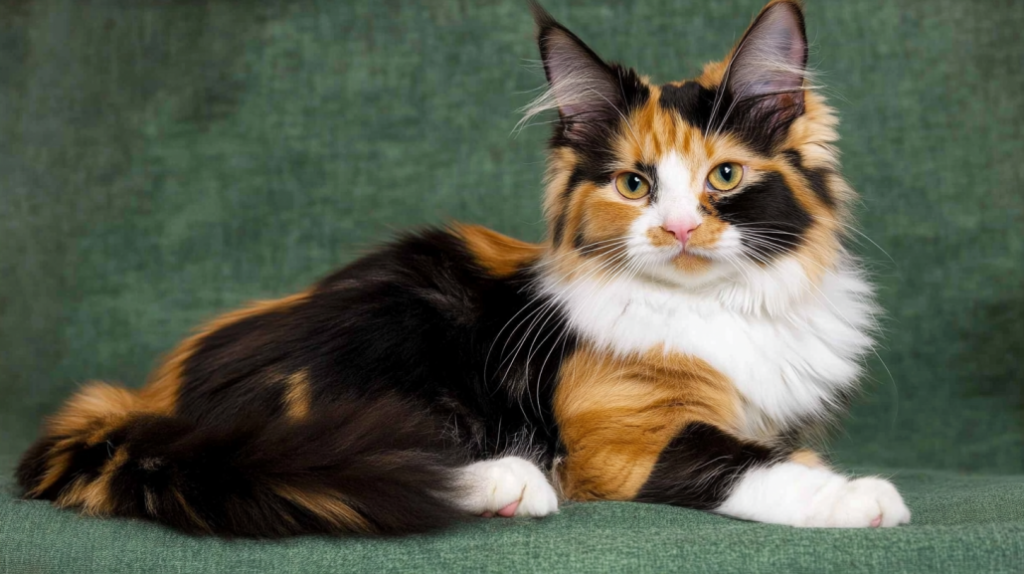
7. Solid White
A pure white Maine Coon looks downright angelic. While white is technically a masking gene that covers the cat’s other color, these Maine Coons present a mesmerizing snowy coat that can have either gold, green, or blue eyes—sometimes even one of each. Caring for a white Maine Coon might involve a bit of extra sun protection for their ears and nose, especially if they like lounging in sunny windows.

8. Red (Ginger) and Cream
Red, often called ginger, exudes warmth and vibrancy, while cream is a softer, diluted version of red. These colors can appear solid, tabby, or combined with white. Some red Maine Coons display vivid tabby stripes, creating a regal “lion-like” appearance that steals the spotlight.
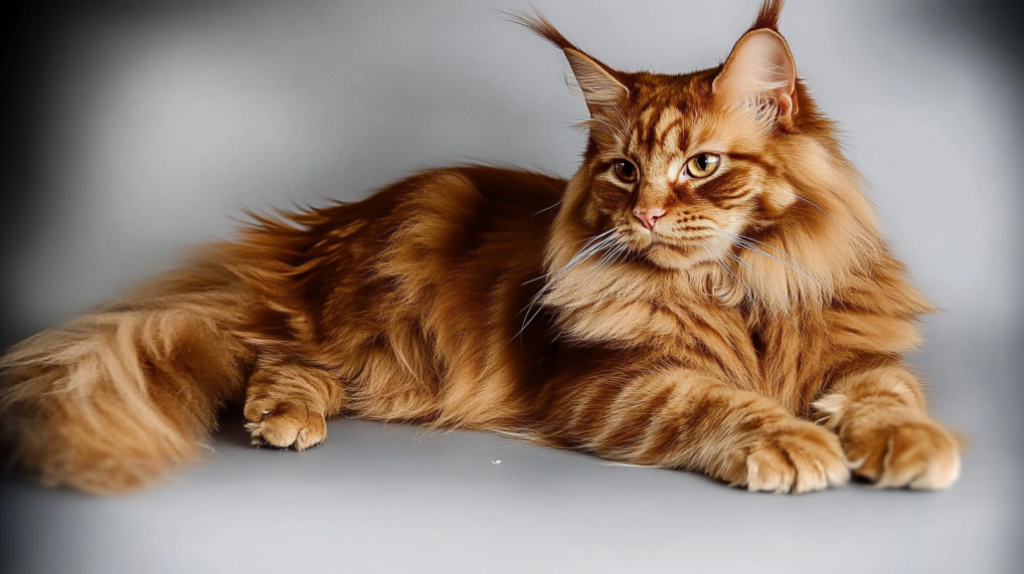
Personality Traits and Color: Myth vs. Reality
It’s easy to fall into the trap of linking coat color to personality. You’ve probably heard someone say that orange cats are friendly, or calicos are sassy. While anecdotal evidence can be fun, there’s no definitive scientific study proving coat color alone determines temperament in Maine Coons. According to sources like the American Veterinary Medical Association (AVMA), cat behavior is influenced more by socialization, genetics beyond coat color, and early-life experiences.
That said, Maine Coons generally share some broad personality traits:
- Friendly and Sociable: They often enjoy being around other pets and kids.
- Intelligent: Maine Coons can learn tricks and respond to cues with relative ease.
- Gentle Demeanor: Despite their large size, they’re often called “gentle giants.”
No matter which of the Maine Coon Cat Colors you choose, you’ll likely gain a companion who is outgoing, playful, and affectionate.
Grooming Tips for Maintaining Maine Coon Cat Colors
Daily / Weekly Brushing
Given their thick, semi-long coat, Maine Coons need regular brushing to prevent mats and tangles. While short-haired cats can get by with weekly grooming, a Maine Coon might benefit from a quick brush at least two to three times a week. This step not only keeps Maine Coon Cat Colors looking vibrant but also reduces hairballs and shedding around the home.
Bathing and Drying
Some Maine Coons tolerate water surprisingly well, but it’s not mandatory to bathe them often. A bath every few months can help remove excess oils and keep the coat fresh, especially for lighter-colored cats prone to showing dirt. If you do bathe your cat, use a cat-friendly shampoo, and dry them thoroughly with a towel or pet-safe dryer—damp fur can lead to chills or skin irritation.
Trimming and Other Essentials
- Nail Trims: Maine Coons can have formidable claws, so clip them every couple of weeks.
- Ear Care: Gently clean the inner ear with a vet-approved solution to prevent wax buildup.
- Dental Health: Regularly brush their teeth if possible, or provide dental treats to reduce plaque.
Consistent grooming not only maintains those dazzling Maine Coon Cat Colors, but it also fosters a strong bond between you and your feline friend.
Common Health Considerations
Regardless of Maine Coon Cat Colors, these cats can be predisposed to certain health issues:
- Hypertrophic Cardiomyopathy (HCM): A genetic heart condition somewhat common in Maine Coons.
- Hip Dysplasia: Large breeds can face hip joint complications.
- Spinal Muscular Atrophy (SMA): A rare neuromuscular disorder that can appear in some lineages.
- Periodontal Disease: A risk for many breeds, emphasizing the importance of dental care.
If you notice any changes in your cat’s gait, breathing, or energy levels, consult your veterinarian. Early diagnosis is critical for managing conditions effectively. For more comprehensive health resources, consider visiting the Humane Society of the United States website for guidance on general cat wellness and preventive care.
Enhancing Coat Health for Vibrant Maine Coon Cat Colors
Nutrition
A well-balanced diet is key to maintaining shiny, robust Maine Coon Cat Colors. Look for cat foods rich in high-quality protein (e.g., chicken, fish, or turkey) and healthy fats. Omega-3 and omega-6 fatty acids, commonly found in fish oil supplements, can keep your cat’s coat lustrous and skin healthy. Always consult your veterinarian about the right dietary choices for your specific Maine Coon, especially if they have allergies or special needs.
Hydration
Maine Coons, like all cats, need consistent access to fresh water. Proper hydration supports overall health, skin elasticity, and coat appearance. Some Maine Coons even enjoy drinking from running water sources like fountains. Encourage them by placing water bowls in easy-to-access areas around your home.
Stress Management
Stress can negatively impact a cat’s coat quality, sometimes resulting in excessive shedding or lackluster fur. Provide your cat with plenty of enrichment, including scratching posts, puzzle toys, and comfortable resting spots. Maine Coons are social, so ensure they have opportunities for interaction—whether that’s a second cat, daily playtime with you, or a cat-friendly dog for companionship.
FAQs
How can I recognize a Maine Coon cat?
You’ll notice their big size, tufted ears, and a fluffy tail. Maine Coon Cat Colors can be varied, but their distinct features also include a rectangular body and friendly demeanor. Official confirmation often requires pedigree or a vet’s assessment.
Do Maine Coon Cat Colors affect personality?
Coat hue doesn’t determine how a cat behaves. Maine Coon Cat Colors range widely, but disposition depends more on genetics and socialization. Each cat is unique, so expect personality variations in any color.
Which Maine Coon Cat Colors are most common?
Brown tabby is one of the most popular and recognized choices. Maine Coon Cat Colors also include black, white, silver, red, and tortie. Your chance of seeing a certain color depends on breeding lines.
How do I maintain my Maine Coon’s coat?
Brush them at least a few times weekly to prevent tangles. Maine Coon Cat Colors shine best with good grooming, occasional bathing, and proper nutrition. Make sure to trim nails and keep up with vet checkups.
Are rare Maine Coon Cat Colors more expensive?
Certain unusual hues can cost more due to limited supply or breeder demand. Maine Coon Cat Colors like silver smoke or cameo might fetch higher prices. Always ensure you adopt from ethical sources, regardless of color.
Can Maine Coons be solid white?
Yes, white is a recognized color, though it’s a masking gene that hides other hues. Maine Coon Cat Colors include various solids, including white. These felines often have striking eye colors, sometimes even odd-eyed combinations.
Conclusion
From the warm, earthy allure of a brown tabby to the dramatic impact of a black smoke or the gentle elegance of a cream coat, Maine Coon Cat Colors promise something for every cat fancier. The depth and range of these hues underscore just how diverse Maine Coons can be—no two are ever truly alike. Yet regardless of coat color, this breed remains consistent in its loving temperament, playful spirit, and larger-than-life charm. If you’re fortunate enough to welcome a Maine Coon into your home, you’re in for a relationship brimming with affection and adventure. Feel free to share your experiences with Maine Coons or drop any questions in the comments below—your fellow cat enthusiasts can’t wait to hear your stories!
Additional Resources & Internal Links
To learn about other intriguing color patterns in felines, you might explore the Calico Tabby traits at https://www.quickypets.com/calico-tabby-cat-2/ or delve into the subtle beauty of the Dilute Tortoiseshell Cat.
Enhancing your knowledge of coat genetics, grooming, and general feline well-being contributes to a happier, healthier life for your cat—no matter which of the Maine Coon Cat Colors they wear so majestically.

